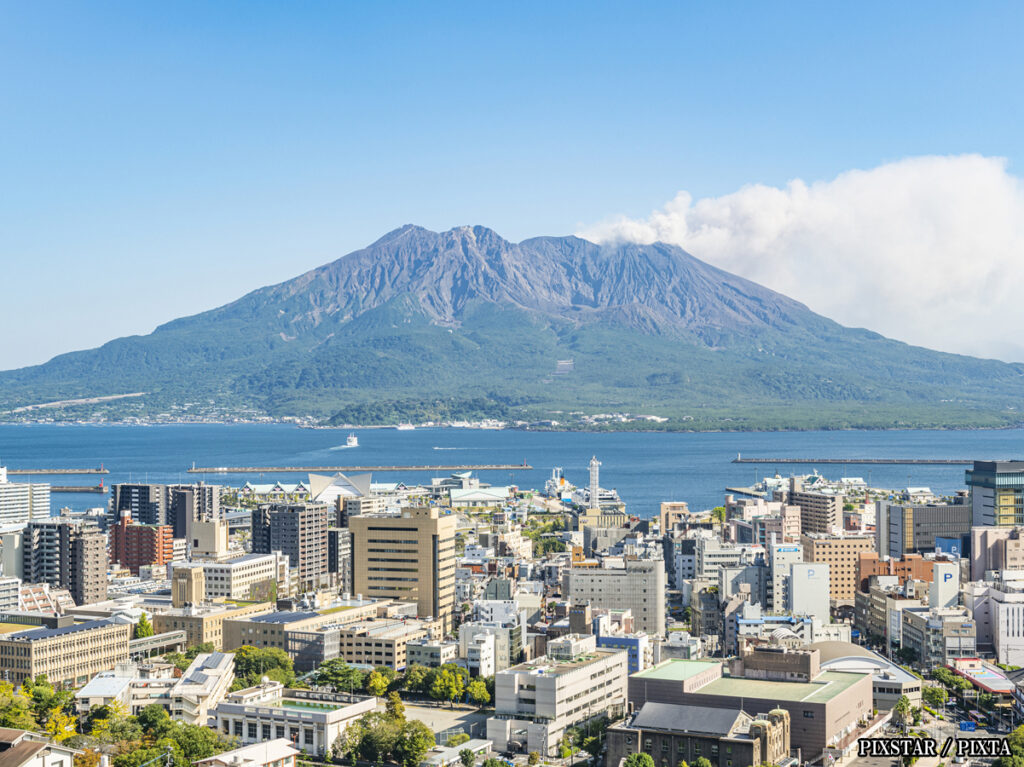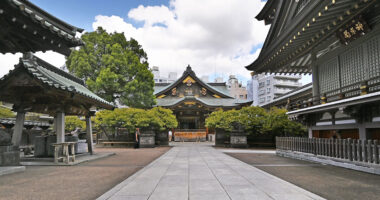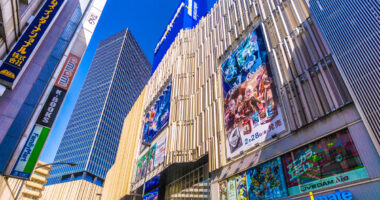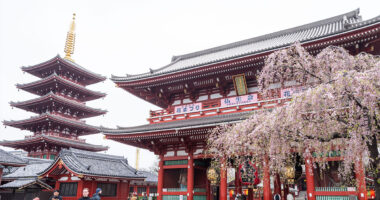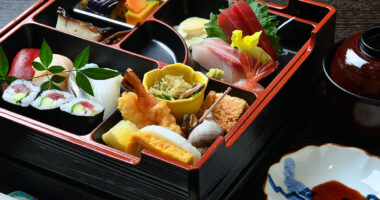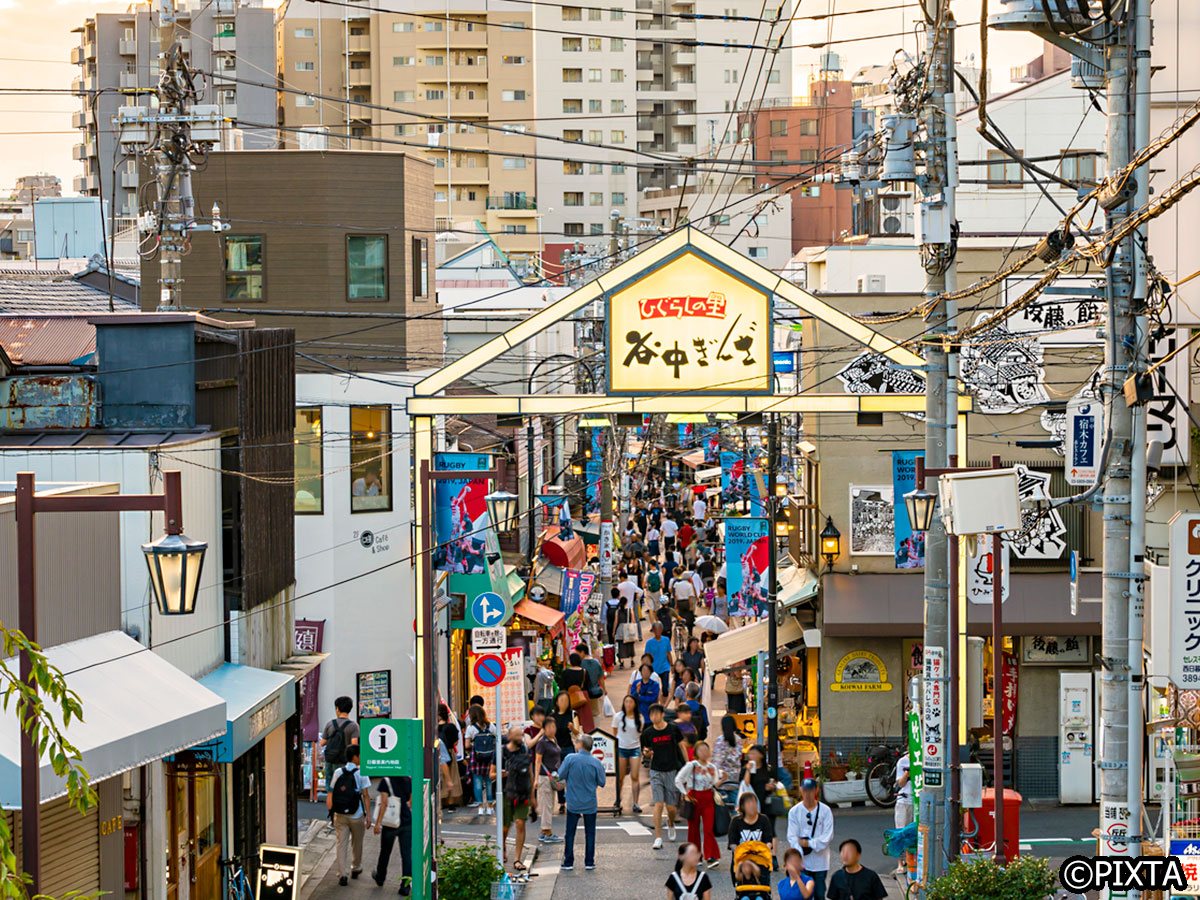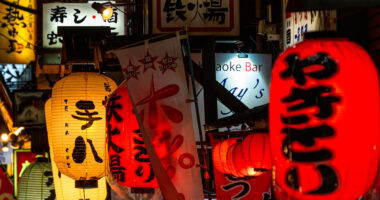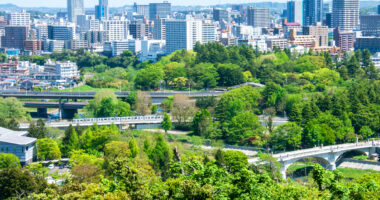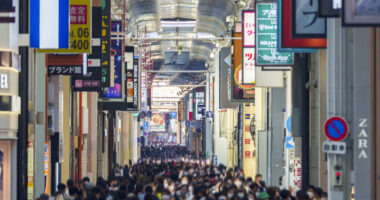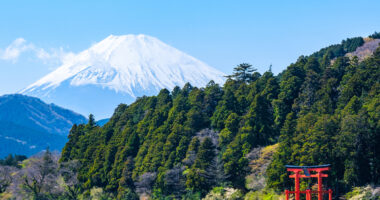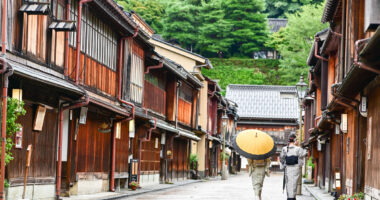Nestled at the southern tip of Japan, Kyushu is a haven for food enthusiasts. With its rich culinary traditions and distinct regional flavors, this island offers an unforgettable street food experience that reflects the heart of local culture.
From the lively streets of Fukuoka to the tranquil corners of Kagoshima and Nagasaki, Kyushu’s food scene is as diverse as it is delicious. Full of exciting flavors and hidden gems, the street food here will delight and surprise at every turn.
In this guide, we’ll take you on a journey through Kyushu’s must-try specialties and vibrant street food culture, which has earned the island its reputation as a foodie’s dream destination.
The cultural and historical roots of Kyushu’s culinary traditions
Kyushu’s history is as diverse and dynamic as its culinary traditions. The island’s strategic location has made it a gateway for cultural exchange, with various civilizations leaving their mark over the centuries. Early influences came from China and the Korean Peninsula, shaping Kyushu’s agricultural practices and food production techniques.
By the time Portuguese traders arrived in the 16th century, Kyushu was already a melting pot of flavors and ideas. This period saw the introduction of new cooking methods and ingredients, which played a pivotal role in shaping the region’s distinct food culture.
Kyushu’s role as a major port in Japan also meant that it was a hub for international trade, particularly with Southeast Asia, Europe, and even the Americas. This exchange of goods and ideas gave rise to a culinary landscape that combines local resources, such as fresh seafood, rice, and vegetables, with foreign influences like spices, meats, and unique preparation techniques.
From the bustling docks of Nagasaki, once a thriving port for foreign traders, to the agricultural regions that fed the island, the history of Kyushu is woven into the fabric of its street food, which remains a beloved part of everyday life for locals and visitors alike.
The street food culture of Kyushu
Street food plays a vital role in the dining culture of Kyushu. Vendors set up their stands, known as yatai, along riversides, near parks, or in busy streets, offering an intimate and casual dining experience. These food stalls, often small enough for just a handful of customers, are an essential part of the region’s social setting.
What makes street food in Kyushu special is not only the food but also the experience. It’s a place where locals gather after work. Tourists mingle with residents, and strangers bond over delicious food. Yatai-style dining is informal, yet it offers the opportunity to savor traditional dishes passed down through generations. The menu offerings range from hot, steaming bowls of ramen to skewered meat, grilled seafood, and pickled delicacies.
Famous regional dishes in Kyushu
Here are some of the must-try regional dishes that are perfect for any foodie exploring Kyushu:
Hakata ramen
Without a doubt, one of the most famous dishes in Kyushu is Hakata ramen. It is a regional specialty from Fukuoka. Hakata ramen is a must-try for tourists as it captures the essence of the city’s casual and hearty food culture.
This dish is loved for its rich, milky tonkotsu (pork bone) broth, which is simmered for hours to create a deep, savory flavor. The ramen noodles are thin and straight, often topped with slices of tender chāshū (Japan’s version of char siu), green onions, and a sprinkle of sesame seeds. Some variations may include pickled ginger, garlic chips, or a soft-boiled egg for extra richness.
While Hakata ramen is typically enjoyed at ramen shops, it’s also a common sight at yatai. The casual, on-the-go nature of these stalls makes them the perfect place to enjoy this steaming bowl of comfort food while immersing yourself in the local scene and connecting with fellow food lovers.
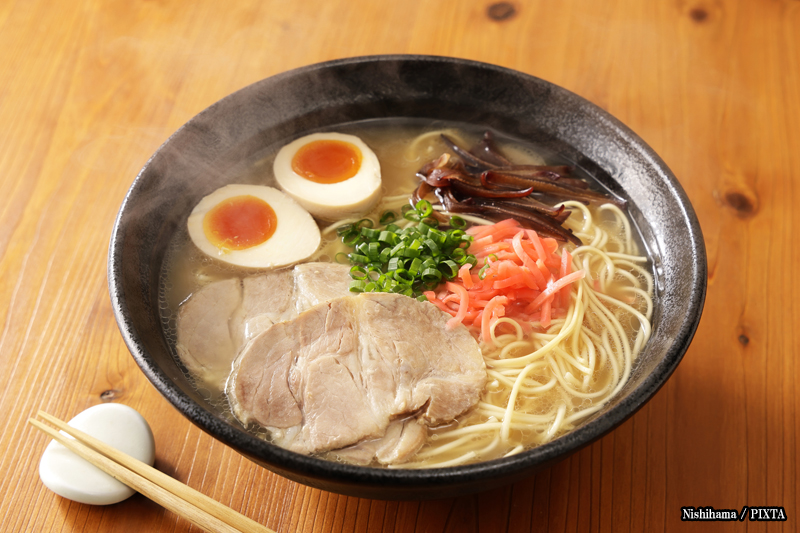
Photo for illustrative purposes
Chikin nanban (Chicken Nanban)
A dish with roots in Kagoshima, chicken Nanban is a crispy fried chicken that’s coated in a sweet and tangy sauce, typically made from soy sauce, vinegar, and sugar. The chicken is often served with a side of tartar sauce, adding a creamy contrast to the crunchiness of the fried exterior. It’s a dish that’s simple, yet full of flavor, and is frequently found throughout Kyushu, especially in the southern regions.
Chicken Nanban is typically served in small portions, making it an excellent choice for sharing. This dish perfectly showcases Kyushu’s knack for combining bold flavors with simple, fresh ingredients.
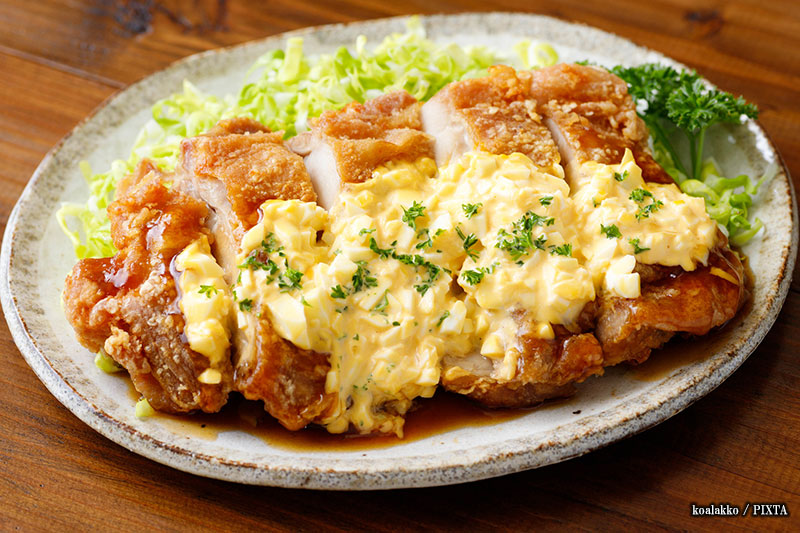
Photo for illustrative purposes
Karashi renkon
Karashi renkon, a dish native to Kumamoto, is a unique and flavorful snack made from lotus root stuffed with a spicy mustard paste, then battered and deep-fried. The combination of the crunchy lotus root and the spicy kick of the mustard creates a satisfying contrast. This regional specialty is often found in local eateries and some yatai stalls throughout Kyushu.
Karashi renkon is an excellent example of how Kyushu’s cuisine blends bold, spicy flavors with ingredients native to the region. It’s a perfect snack to enjoy on the go or as a side dish while sampling other local foods.
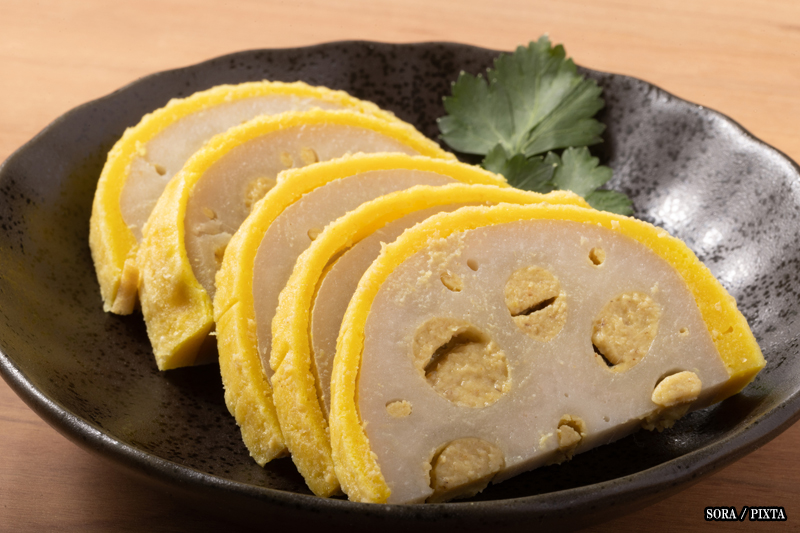
Photo for illustrative purposes
Mentaiko
Mentaiko, or spicy pollock roe, is a beloved food item throughout Fukuoka and Kyushu. It’s commonly served as a side dish, snack, or topping for rice, noodles, or even onigiri (rice balls). The roe is salted then marinated in a sauce seasoned with chili peppers, giving it a spicy kick that pairs perfectly with the rich, briny flavor of the fish eggs.
Some street stalls and many casual eateries in Fukuoka serve mentaiko-stuffed omelets and other savory bites. It’s an essential part of the Fukuoka food scene and is often used in other dishes, including mentaiko pasta.
Motsu-nabe
Motsu-nabe is a hearty offal hot pot beloved in Fukuoka and across Kyushu, traditionally served bubbling with beef or pork tripe, cabbage, garlic, and chives in a soy- or miso-based broth. Known for its collagen-rich, deeply savory flavor, it’s typically a sit-down dish—but in Kyushu’s street food scene, you can find more accessible versions too.
At food stall districts like Nakasu Yatai Street or Hakata no Yatai Yokocho, some stalls serve mini motsu-nabe bowls, offering a portable taste of this soul-warming specialty. Whether paired with a glass of shochu or enjoyed solo on a chilly evening, motsu-nabe is a satisfying and distinctive part of Kyushu’s comfort food lineup.
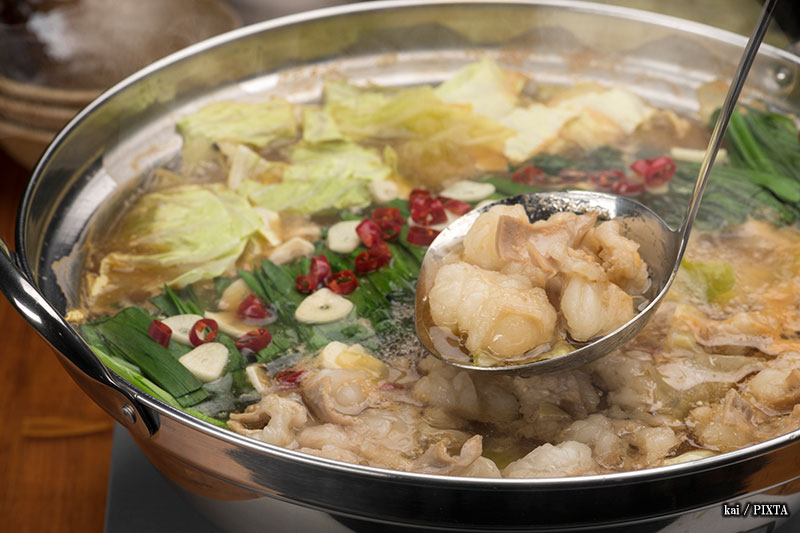
Photo for illustrative purposes
Where to find yatai in Kyushu
For visitors exploring Kyushu, yatai are an exciting way to dive into the island’s unique culinary scene. Whether you’re wandering through the lively streets of Fukuoka or relaxing in the quieter towns, stopping by a food stall for a bite is an unforgettable experience. It’s a perfect way to taste the authentic flavors of Kyushu, while taking in the sights and sounds of the region.
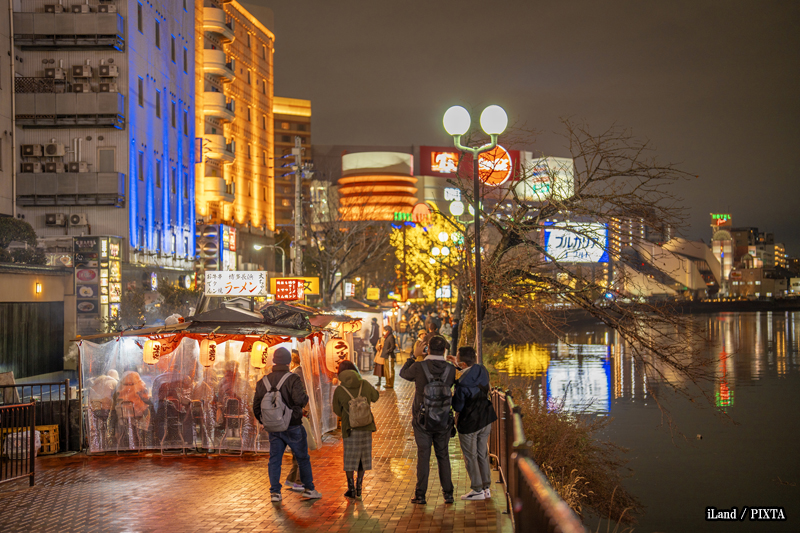
Photo for illustrative purposes
As the capital of Fukuoka Prefecture, Fukuoka is home to the most iconic yatai scene in Kyushu. Along the Nakasu and Tenjin districts, rows of food stalls line the streets, offering everything from ramen to skewered meats and seafood. These stalls typically open in the early evening and close late at night, making them perfect for a casual dinner after a day of sightseeing.
Related articles:
- “Fukuoka Local Gourmet Experience! 5 Popular Dishes for Thai People“
- “The Best Food to Eat in Fukuoka! What to Eat in Japan’s Foodie Heaven“
Kagoshima
Kagoshima’s yatai culture is more intimate and relaxed compared to Fukuoka, but it’s no less inviting. In Kagoshima, you can find a mix of local delicacies, such as shirokuma (a shaved ice dessert made with condensed milk and colorful toppings) and tonkotsu ramen, alongside the more familiar offerings of various grilled and fried foods and meat skewers.
Nagasaki
For Kyushu-style street snacking, make a beeline for Shinchi Chinatown: its compact grid is lined with walk-up counters and bamboo-steamer stalls that stay busy from late morning into the night. At the top of the list is the melt-in-your-mouth kakuni manjū—braised-pork-belly buns—served to go at long-running shops such as Iwasaki Honpo. Other easy-to-eat treats, from sesame-seed goma dango to spring rolls, are sold from the same curb-side baskets. (Nagasaki’s signature champon noodle soup is delicious too, but you’ll find it in casual diners rather than at yatai.)
Kumamoto
Kumamoto is known for its strong, flavorful dishes, such as karashi renkon and basashi (horse meat sashimi). The yatai scene here may be quieter than in Fukuoka, but it still offers a delightful taste of the local cuisine. Street vendors in Kumamoto often serve hearty meals that reflect the region’s agricultural and livestock history.
What makes Kyushu’s food different from other regions?
Kyushu’s food culture stands out from other parts of Japan for several reasons. First, the island’s unique geographical location plays a significant role in its culinary offerings. The proximity to both the sea and fertile farmland means that Kyushu has access to a wide range of fresh ingredients. The rich, creamy tonkotsu broth is a regional hallmark, setting Kyushu’s ramen apart from other varieties across Japan.
Second, Kyushu’s food reflects its diverse cultural influences. From the historical presence of Portuguese and Dutch traders in Nagasaki to the strong Chinese influence in dishes like champon, Kyushu has always been a crossroads for various culinary traditions. This blend of influences gives Kyushu its distinct flavor profile, emphasizing bold and delicate tastes.
Finally, the relaxed and welcoming atmosphere of yatai dining in Kyushu sets the region apart. The food stalls are a place where people can enjoy authentic, locally sourced meals in a casual and social environment. This makes food in Kyushu not just about taste, but also about the experience of dining in a shared space with locals and fellow travelers.
Cultural tips for enjoying yatai-style dining
Yatai dining is all about enjoying the simple pleasure of eating outside and sharing good food with others. Whether you’re a local or a tourist, here are a few easy tips to help you fully enjoy a meal at the food stalls:
- Be prepared for a casual, relaxed atmosphere:
Yatai dining is informal, so don’t expect a polished, fine-dining experience. You’ll likely be sitting on small stools or standing around a food stall with a few other patrons. This is part of the charm of yatai, so embrace its casual nature. - Interact with the vendor:
Many yatai vendors are friendly and open to chatting with customers. Feel free to ask about the dish you’re ordering or simply engage in conversation about the food and the local area. It’s all part of the experience. - Order in small portions:
Street food stalls typically offer smaller portions, allowing you to try a variety of different dishes in one sitting. Don’t hesitate to order multiple items to sample as much as you can. - Enjoy the night atmosphere:
Yatai stalls are often open late, creating a vibrant nighttime atmosphere. It’s a great way to wind down after a day of exploring Kyushu, especially when paired with a cold drink and some lively conversation.
Conclusion
Kyushu’s street food scene is an experience you won’t want to miss. The ever-vibrant yatai culture offers a chance to connect with locals while enjoying delicious, authentic dishes in a relaxed setting. It’s the perfect way to immerse yourself in the island’s rich culinary traditions.
While you explore, be sure to respect local customs and take time to savor every moment of this unique dining experience. It’s a guarantee that Kyushu’s food will leave you with lasting memories and a full heart!
